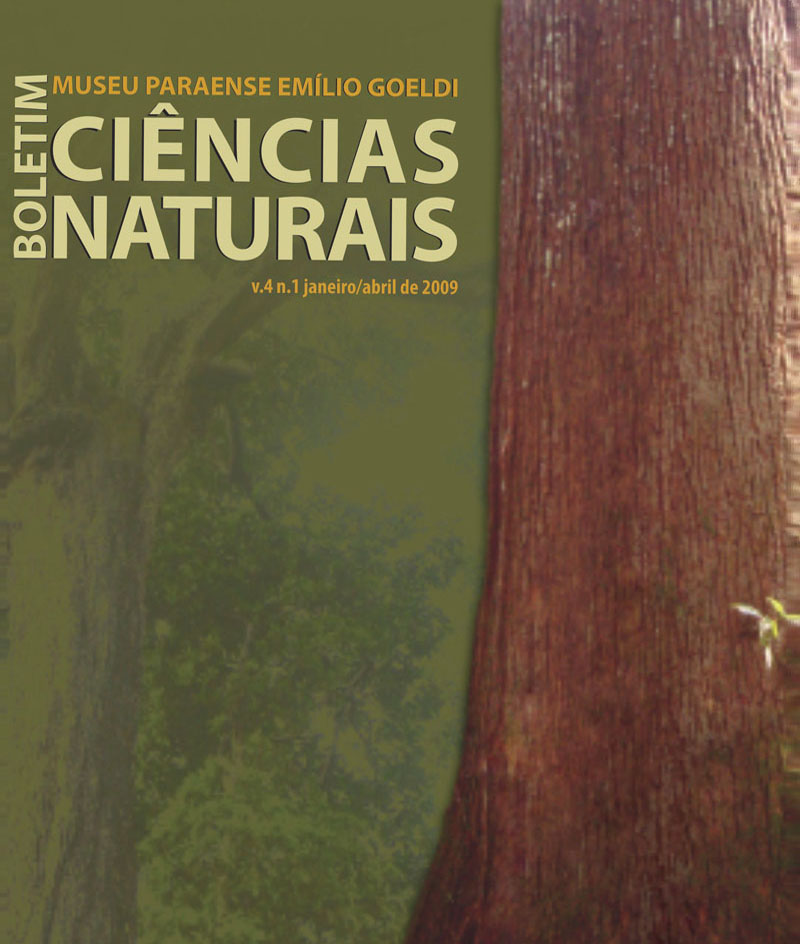Structural analysis of two mangrove stands, Cajutuba river, municipality of Marapanim, Pará, Brazil
DOI:
https://doi.org/10.46357/bcnaturais.v4i1.668Keywords:
Forest structure, Amazonian mangroves, MarapanimAbstract
The present study describes the structural characteristics of the mangrove forest of the Cajutuba river, municipality of Marapanim, Pará state, Brazil. The point centered quarter method (PCQM) was used to analyze two transects at two different study sites (C1, C2). Three mangrove species were found: Rhizophora mangle L., Avicennia germinans (L.) L. and Laguncularia racemosa C. F. Gaertn. At C1, all three species were registered. C2 is an almost monospecific R. mangle forest (one single tree of A. germinans). At C1, tree heights varied between 4 and 21 m, while diameter ranged between 8,6 and 108,3 cm. At C2, tree height varied between 10 and 22 m, stem diameter between 10,5 and 97,1 cm. C2 presented the highest basal area values. At C1, numerous individuals had intermediate diameters, but small trees also occurred. At C2, 76% of the trees had diameters between 25 and 30 cm, but small trees were almost absent. Diameter and height of mangrove trees at C2 are significantly larger than those at C1. Salinity results are not enough to take conclusive results.
Downloads
Published
Issue
Section
License
Publication means fully assigning and transferring all copyrights of the manuscript to the journal. The Liability Statement and
Assignment of Copyrights will be enclosed with the notice of acceptance. All the authors must sign the document and return it to the journal.






